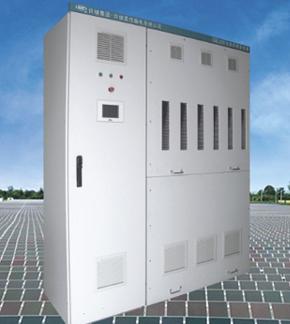 IMS Research expects that in 2016, global shipments of inverters will reach 60GW and the market size will reach US$10 billion. Some analysts said that with the decline of the traditional photovoltaic market and the rise of emerging photovoltaics, the global inverter market structure will also face a huge adjustment.
IMS Research expects that in 2016, global shipments of inverters will reach 60GW and the market size will reach US$10 billion. Some analysts said that with the decline of the traditional photovoltaic market and the rise of emerging photovoltaics, the global inverter market structure will also face a huge adjustment. From the current market layout, the world’s top ten PV inverter manufacturers, such as SMA, Power-One, Fronius, Kaco and other giants still control most of the market. However, the continuous decline in inverter prices and market changes such as the inability of new markets such as Japan, China, India, and the United States to infiltrate has already caused these traditional giants to suffer a considerable loss. Recently, the leading supplier of photovoltaic inverters SMA released a revenue warning and announced that it has laid off more than 1,000 people worldwide, and the US Satcon has even filed for bankruptcy protection.
IMS Research predicts that Europe will account for 54% of global shipments in 2012 and this figure will decline to 40% by 2014. The agency predicts that the world’s top ten manufacturers in 2014 will be very different from today’s situation, and more Chinese and Japanese companies will emerge. From a qualitative point of view, the gap between China's inverters and international brand inverters is gradually narrowing. Some models, such as Gruwatt’s Growatt5000 MTL, have achieved double-A performance in the PHOTON test and have reached the world’s leading level. According to a survey of downstream users of inverters conducted by IMS Research, more and more Western customers are beginning to accept Chinese inverters.
Recently, Vice Premier Li Keqiang of the State Council revealed that the installed capacity of solar power generation will reach 50 GW by 2020. The opening of the Chinese market will also bring tremendous opportunities for the development of China's inverter brands. Industry analysts have been optimistic about the development prospects of China's inverter manufacturers, especially China's inverters export and exports of the first two Guruwatt and Sun Power.
Guruwatt New Energy, which was originally invested in Sequoia Capital at the beginning of 2012, continues to hold the top position of China's inverter exports. With the rapid growth of more than two years since its founding, Guruwati has been selected by the leading domestic financial institutions. 2012 China's top 100 innovation and growth, "2012 most growth companies", "2012 China's top ten inverter brands" and so on. The rapid growth in the two domestic and international markets has made Gureat’s future development potential inestimable. Another solar power source currently firmly occupying the first position in China's domestic market has a huge development prospect due to the outbreak of the Chinese market.
Industrial Energy Storage System
The main function of the Industrial Energy Storage System is to store energy in the industrial field to meet the energy demand in the industrial production process. It is an energy storage solution for improving energy efficiency and power supply stability in industrial production systems.
Main effect:
Energy peak shaving: Industrial energy storage systems can store energy and release energy at the peak of energy demand to meet the high energy consumption demand in the industrial production process. This helps to achieve a balanced deployment of energy and avoid energy waste or power outages caused by imbalances in energy supply and demand.
Reserve power supply: When the power supply of the power grid is unstable or there is a power outage, the industrial energy storage system can be used as a backup power supply to continue to supply the power required by industrial equipment and ensure the continuous operation of industrial production.
Energy saving and emission reduction: Through rational use of energy storage, industrial energy storage systems can optimize energy consumption and reduce energy waste, thereby achieving the goal of energy saving and emission reduction, and reducing the impact of industrial production on the environment.
Differences from other energy storage systems:
Scale and capacity: Industrial energy storage systems usually have large scale and energy storage capacity to meet the high energy demand in industrial production. Home energy storage systems, on the other hand, are usually smaller and are mainly used in home photovoltaic power generation systems.
Application scenarios: Industrial energy storage systems are mainly used in the industrial field to meet the energy demand in the industrial production process. The Home Energy Storage System is used in the home photovoltaic power generation system to improve the energy self-sufficiency of the home.
Control and management: Due to the large scale of industrial energy storage systems, their control and management require more complex and precise technical means to achieve efficient energy utilization and stable supply. Home energy storage systems are usually relatively simple and easier to automate and manage.
Generally speaking, the main function of industrial energy storage systems is to meet the energy demand in the process of industrial production, realize the balanced deployment of energy, and the stability of the power supply. Compared with home energy storage systems, it is different in terms of scale, capacity, application scenarios, and technical complexity. The application of industrial energy storage systems helps to improve the energy utilization efficiency of industrial production, optimize energy management, and promote sustainable development and green production.
large scale battery energy storage systems, utility scale battery energy storage systems, electrical energy storage systems, commercial and industrial energy storage, energy storage system company
Ningbo Autrends International Trade Co., Ltd. , https://www.aitsolarpanels.com